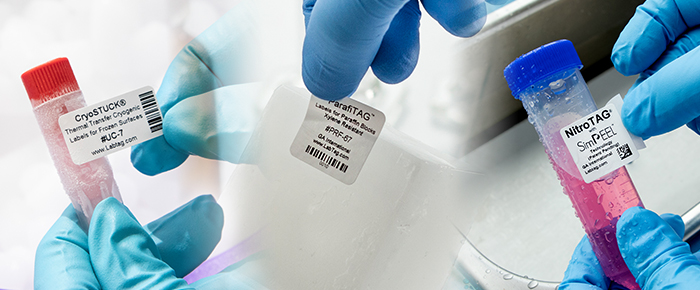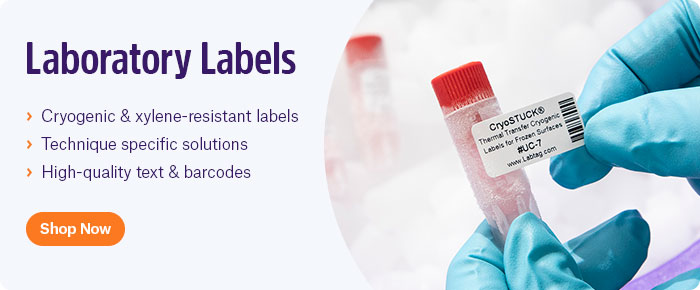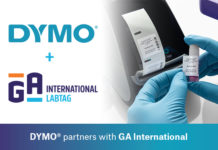
Sample identification using barcode and/or RFID labels is now considered an essential component of laboratory workflows. However, not all labels are created equal; some specialty labels have been devised that are ideal for specific hard-to-stick surfaces, particularly those encountered in histology and cryogenic storage. Here, we’ve listed three of the most commonly encountered hard-to-stick surfaces, with best practices for identifying them.
Paraffin wax cassettes
For those working with histochemistry, paraffin wax is an essential component in sample preparation, used to solidify tissue samples and allow their sectioning and placement on glass slides. Unfortunately, the cassettes that hold paraffin wax blocks represent some of the hardest surfaces for typical labels to adhere, especially as they are exposed to harsh chemicals like xylene. Regarding these cassettes, it is recommended to use labels such as the patent-pending ParafiGARD™ or ParafiTAG™. Both represent options that stick efficiently to Formalin-Fixed Paraffin-Embedded (FFPE) tissue cassettes while resisting long-term immersion in organic solvents, including xylene and its substitutes. ParafiGARD labels are especially useful for identifying these cassettes, as they are outfitted with a metallic foil layer. This makes them identifiable by metal detectors, ensuring no sample becomes lost or is accidentally discarded during processing.
Frozen surfaces
Cryogenic preservation can be hazardous to your samples if you’re not using the correct materials for identification. Often, microtubes and vials containing live cell lines or primary tissues require re-labeling; however, thawing the samples in order to apply the label then re-freezing them risks killing most of the cells, resulting in poor culture yields when you need them. To properly re-label frozen surfaces, it’s recommended to use CryoSTUCK® labels, which can be applied at temperatures as low as -80°C, allowing you to label or re-label previously frozen containers and preserving the integrity of the samples inside. For legacy vials that require complete concealment of outdated or obsolete information, Blackout CryoSTUCK® labels are available, while Clear CryoSTUCK® labels can be used to over-label vials when you do not wish to obscure the information underneath.
Wet surfaces
Like frozen surfaces, wet surfaces can be challenging to identify with general purpose labels. Wet containers typically include tubes and vials that had to be thawed from cryogenic conditions or were incubated in water baths; ultimately, these containers are often placed back in cryogenic freezers or liquid nitrogen for long-term storage. Thus, it is recommended to use cryogenic labels, such as NitroTAG®, for these containers, as they can be applied directly to wet or moist surfaces and withstand temperatures as low as -196°C. They are waterproof as well, so direct immersion in water and other water-based solutions will not cause the label to fail. In addition to plastic tubes and vials, they can also be applied to cardboard freezer boxes, polypropylene cryo boxes, cell culture plates, and plastic bags.
LabTAG by GA International is a leading manufacturer of high-performance specialty labels and a supplier of identification solutions used in research and medical labs as well as healthcare institutions.


